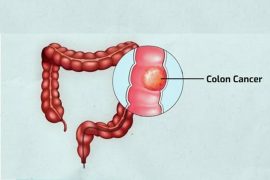Maintaining optimal cardiorespiratory fitness can significantly reduce the risk of nine different types of cancer by up to 40%. The cancers affected include head and neck, stomach, pancreas, liver, colon, rectum, esophagus, kidney, and lung.
While it is known that exercise and physical activity contribute to lowering overall cancer risk, a recent study published in the British Journal of Sports Medicine delves into the relationship between cardiorespiratory fitness and specific, site-specific forms of cancer, shedding light on the protective benefits of a healthy cardiovascular system against these cancers.
“We found that higher cardiorespiratory fitness at age 18 was associated with a lower risk of being diagnosed with nine out of the 18 site-specific cancers we included in our study. The associations between fitness and cancer seemed to be most apparent in gastrointestinal cancers,” Dr. Aron Oner up, PhD, a postdoctoral researcher in the Department of Pediatrics at the University of Gothenburg, and lead author of the study, informed Healthline.
Dr. Erika Rees-Punia Trusted Source, PhD, Senior Principal Scientist, Population Science Department at the American Cancer Society, speaking on behalf of the ACS, informed Healthline, “This is a large study that provides more evidence for a link between cardiorespiratory fitness and cancer risk.”
“The results of this study aligned with what we know about physical activity, cardiorespiratory fitness, genetics, and cancer,” she stated.
Researchers analyzed data from over one million male participants who underwent military conscription between 1968 and 2005. These participants were tracked for cancer outcomes over an average period of 33 years. The study cohort consisted of healthy young men, as those with severe chronic conditions, functional disabilities, or imprisonment were excluded.
“This study highlights that fitness is also on the list of lifestyle risk factors that could change the risk of developing cancers, as has been shown previously for other diseases. Our results also show that, as for other diseases, the association seems to be linear, meaning that every positive change in fitness is associated with some risk reduction. Hence, even small additions count,” stated Dr. Onerup.
The study’s robustness lies in its utilization of a “maximal aerobic workload” test, a form of the VO2 max test, which measures the body’s oxygen utilization during peak performance, serving as a reliable indicator of cardiorespiratory fitness. Higher fitness levels were associated with reduced levels of obesity, higher parental education, lower smoking and substance abuse rates, and greater cognitive ability.
“They have an actual measurement of cardiorespiratory fitness. A lot of studies before having mainly looked at self-reported physical activity… and usually, that’s not as reliable as an actual measurement of cardiorespiratory fitness,” Lindholm stated, alluding to a well-known research study published in JAMA in 2016Trusted Source.
Remarkably, higher cardiorespiratory fitness was consistently linked to a lower risk of the specified cancers. Among the cohort, 84,117 individuals (approximately 7%) developed one of the 18 monitored cancers over the observation period. Men with the highest fitness levels had a significantly lower risk of head and neck, stomach, pancreas, liver, colon, rectum, esophagus, kidney, and lung cancer. The risk reduction was most pronounced in lung cancer (42%), followed by liver cancer (40%), esophageal cancer (39%), pancreatic cancer (12%), and rectal cancer (5%).
Interestingly, the study observed slightly increased risks of skin cancer and prostate cancer associated with higher cardiorespiratory fitness, though the reasons for this are not definitively explained. It is suggested that more physically fit individuals might spend more time in the sun, potentially explaining the increase in skin cancer risk.
In conclusion, the study highlights the importance of maintaining good cardiorespiratory fitness in reducing the risk of specific forms of cancer. The American Cancer Society’s physical activity guidelines recommend 150-300 minutes of moderate intensity exercise per week for adults, emphasizing the role of exercise in lowering cancer risk. Ultimately, the research underscores the significant impact of cardiovascular health on cancer prevention.
Disclaimer:
The information contained in this article is for educational and informational purposes only and is not intended as a health advice. We would ask you to consult a qualified professional or medical expert to gain additional knowledge before you choose to consume any product or perform any exercise.








